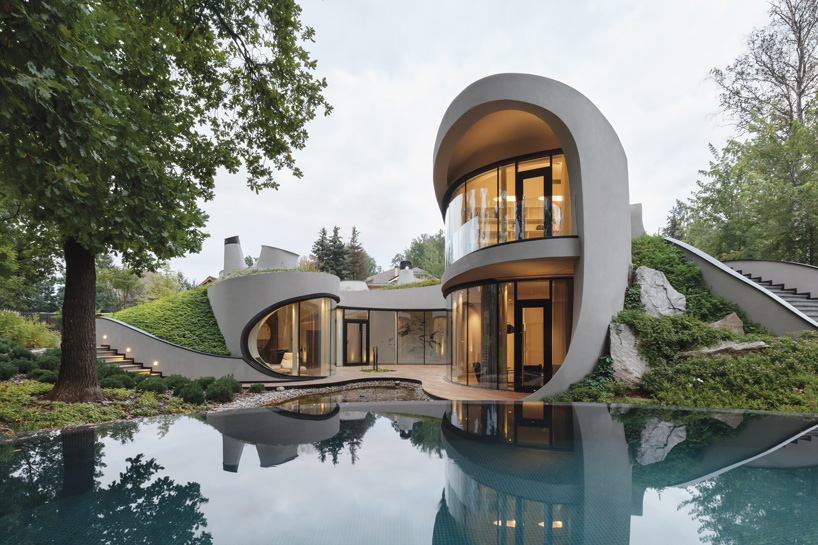The Essential Duty of an Engineer in Shaping Sustainable Urban Settings for Future Generations
The duty of an engineer in crafting lasting urban environments is increasingly critical in responding to the challenges of climate change and urbanization. By flawlessly incorporating environmental concepts into their designs, engineers not only enhance the visual and useful quality of metropolitan spaces but likewise address pressing concerns such as energy effectiveness and social equity. Their expertise in cutting-edge products and community involvement shapes developments that reverberate with regional values and desires. As we discover the complexities of this area additionally, it becomes evident that the future of urban living may hinge on the very practices architects employ today.
Recognizing Lasting Urban Layout
Lasting city style incorporates ecological principles with city preparation to create atmospheres that are not just livable however likewise resistant. This approach emphasizes the value of including natural systems into the metropolitan fabric, guaranteeing that development satisfies the demands of today without compromising the capacity of future generations to satisfy their very own demands. Crucial element of sustainable urban design include efficient land use, the promotion of biodiversity, and the combination of environment-friendly rooms, every one of which add to boosted lifestyle for residents.
Additionally, sustainable urban design prioritizes the reduction of the urban heat island effect, improved air quality, and effective stormwater management. It encourages using eco-friendly resources and energy-efficient building practices, which dramatically reduced carbon impacts. Lasting city style promotes social equity by creating available public areas and promoting mixed-use advancements that cater to varied populaces.
Through thoughtful planning and cutting-edge style techniques, sustainable metropolitan environments can boost neighborhood durability versus environment modification while promoting economic development. This all natural method not just addresses instant metropolitan challenges however also lays the groundwork for healthier, much more lasting cities for generations ahead.
Secret Responsibilities of Engineers
Designers play a pivotal duty fit lasting metropolitan environments by converting style concepts into substantial structures and rooms. Their obligations incorporate a variety of activities that add to the general success of city design tasks.
Primarily, engineers conduct detailed site evaluations to understand the ecological, social, and social context of their jobs. This fundamental knowledge notifies their layout decisions, ensuring that buildings integrate with their surroundings. They likewise take part in collaborative processes with stakeholders, consisting of city planners, engineers, and the neighborhood, cultivating an inclusive method to city growth.
Additionally, designers are entrusted with creating styles that enhance power performance, resource conservation, and performance. They have to adhere to regional zoning legislations, developing codes, and sustainability qualifications, ensuring compliance while pushing the limits of technology.

Cutting-edge Materials and Techniques
In the quest of environmentally responsible design, ingenious materials and strategies have become essential aspects in the creation of lasting city atmospheres. Architects are significantly making use of products that decrease environmental impact while enhancing power performance. As an example, recycled materials, such as recovered wood and repurposed steels, not just reduce waste yet also add distinct visual qualities to frameworks.
Furthermore, improvements in modern technology have led to the growth of high-performance materials, such as protected concrete kinds (ICFs) and photovoltaic glass, which add to energy preservation and harness renewable power. Methods such as easy solar style and eco-friendly roofing systems better exemplify how style can integrate with natural systems, decreasing dependence on artificial heating and cooling.
Furthermore, the combination of wise materials, which adapt to environmental modifications, uses appealing avenues for improving building performance - cda architects. These materials can reply to temperature level variations or dampness degrees, enhancing comfort and sustainability
Eventually, the tactical selection and application of innovative products and strategies encourage designers to produce urban check out this site spaces that are not only useful and cosmetically pleasing yet additionally durable and environmentally responsible, ensuring a lasting future for generations to find.
Community Engagement and Cooperation
The success of cutting-edge materials and techniques in lasting metropolitan design is considerably enhanced by energetic neighborhood engagement and cooperation. Designers should recognize that the constructed atmosphere exceptionally affects the lives of neighborhood citizens, making it critical to include them in the design procedure. Engaging the area promotes a sense of possession and accountability, ensuring that growths not only meet visual and functional demands but additionally mirror the worths and ambitions of those who occupy them.

Effective area involvement additionally aids in focusing on social equity within city growth. By taking into consideration the voices of marginalized populaces, engineers can develop rooms that are comprehensive and fair. By doing this, neighborhood engagement and collaboration end up being essential to attaining really sustainable metropolitan atmospheres that serve the requirements of existing and future generations.
Future Fads in Lasting Style

Furthermore, advancements in innovation are forming future patterns in sustainable style. The assimilation of clever products and structure systems enables real-time power administration, boosting effectiveness and decreasing carbon impacts. Developments such as environment-friendly roofings, living wall surfaces, and energy-generating site here facades are coming to be standard practices, additionally advertising eco-friendly balance within city settings.
Additionally, a shift in the direction of biophilic layout is acquiring traction, stressing the connection in between nature and human health. By integrating all-natural aspects, designers develop spaces that promote psychological health while promoting biodiversity.
Final Thought
Finally, designers are critical beforehand sustainable metropolitan settings via their knowledge in design, innovative products, and neighborhood involvement. By focusing on energy effectiveness and resource preservation, these specialists go contribute to the creation of durable metropolitan rooms that satisfy the requirements of existing and future generations - cda architects. The integration of ecological principles not just enhances livability yet likewise cultivates social equity, making certain developments reverberate with the values and desires of the areas they offer